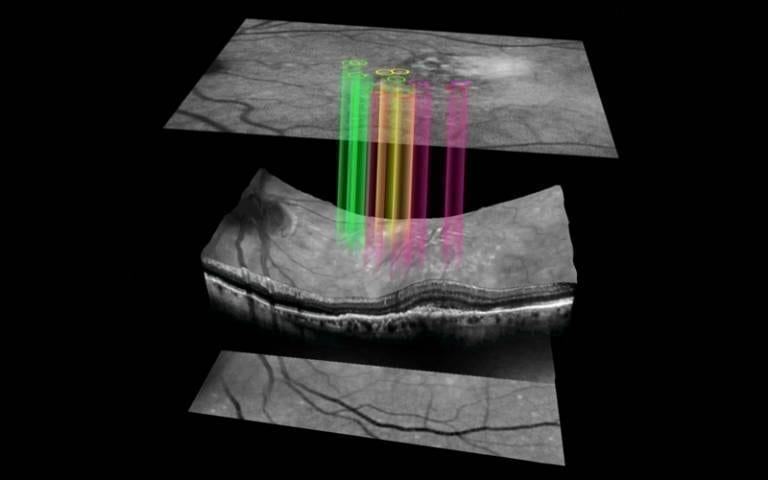
Representative specimen image of Anopheles stephensi from Mosquito Image Database. Picture shows a mosquito stored by freezing at -80C.
CREDIT: Couret, J. et al. 2020 (CC-BY 2.0)
Rapid and accurate identification of mosquitoes that transmit human pathogens such as malaria is an essential part of mosquito-borne disease surveillance.
Now, researchers reporting in PLOS Neglected Tropical Diseases have shown the effectiveness of an artificial intelligence system–known as a Convoluted Neural Network–to classify mosquito sex, genus, species and strain.
Human malaria is an ongoing public health crisis affecting multiple continents, with the highest numbers of cases and people at risk occurring in sub-Saharan Africa. However the identification of mosquitoes that transmit malaria can be difficult–some species are nearly indistinguishable even to trained taxonomists.
In the new work, Jannelle Couret of University of Rhode Island, USA, and colleagues applied a Convoluted Neural Network (CNN) to a library of 1,709 two-dimensional images of adult mosquitos. The mosquitoes were collected from 16 colonies in five geographic regions and included one species not readily identifiable to trained medical entomologists. They also included mosquitoes that had been stored in two different ways–by flash freezing or as dried samples.
Using the library of identified species, the researchers trained the CNN to distinguish Anopheles from other mosquito genera, to identify species and sex within Anopheles, and to identify two strains within a single species. They found a 99.96% prediction accuracy for class and a 98.48% accuracy for sex.
“These results demonstrate that image classification with deep learning can be a useful method for malaria mosquito identification, even among species with cryptic morphological variation,” the researchers say. “The development of an independent and accurate method of species identification can potentially improve mosquito surveillance practices.”
The Latest Updates from Bing News & Google News
Go deeper with Bing News on:
Mosquito-borne disease surveillance
- Ross River virus detected in record number of Queensland mosquitoes
Entomologists have detected the Ross River virus in a record-breaking number of this summer, sparking a warning for Aussies to protect themselves from mosquito bites.
- Florida Department Of Health In Pasco County Warns Of Increase In Mosquito-Borne Disease
The Florida Department of Health in Pasco County (DOH-Pasco) is warning residents that in Pasco County. Eastern equine encephalitis virus was detected in a group of sick emus. The risk of transmission ...
- Mosquito-borne diseases are a growing threat in a warming world
As our planet warms and urban areas expand, the threat of mosquito-borne diseases such as malaria and dengue is escalating ...
- Mosquito-Borne Diseases To See 'Increasingly Frequent Outbreaks' Worldwide
"We must anticipate outbreaks and move to intervene early to prevent diseases from happening in the first place," researchers warn.
- Over half of world's population 'could be at risk of mosquito-borne diseases', scientists warn
The global number of mosquito-borne dengue cases alone has increased eight-fold in the last two decades, rising from 500,000 in 2000 to more than five million recorded instances in 2019 ...
Go deeper with Google Headlines on:
Mosquito-borne disease surveillance
[google_news title=”” keyword=”mosquito-borne disease surveillance” num_posts=”5″ blurb_length=”0″ show_thumb=”left”]
Go deeper with Bing News on:
Convoluted Neural Network
- PV module fault detection technique based on convolutional neural network
An international research team has used the convolutional neural network (CNN) deep learning algorithm to identify faults in solar panels. Its work showed the proposed technique has a high degree of ...
- AI Efficiency Breakthrough: How Sound Waves Are Revolutionizing Optical Neural Networks
Researchers have developed a way to use sound waves in optical neural networks, enhancing their ability to process data with high speed and energy efficiency. Optical neural networks may provide the ...
- Samsung QN900D
The 75-inch model on test here is known as the QE75QN900D in the UK, where Samsung suggests it will cost £6690. In the US it’s the QN75QN900D and is being sold for $6300, and in Australia, it’s the ...
- Why humans can't use natural language processing to speak with the animals
The field of NLP research has undergone a significant evolution in recent years, as its core systems have migrated from older Recurrent and Convoluted Neural Networks towards Google’s Transformer ...
Go deeper with Google Headlines on:
Convoluted Neural Network
[google_news title=”” keyword=”Convoluted Neural Network” num_posts=”5″ blurb_length=”0″ show_thumb=”left”]










